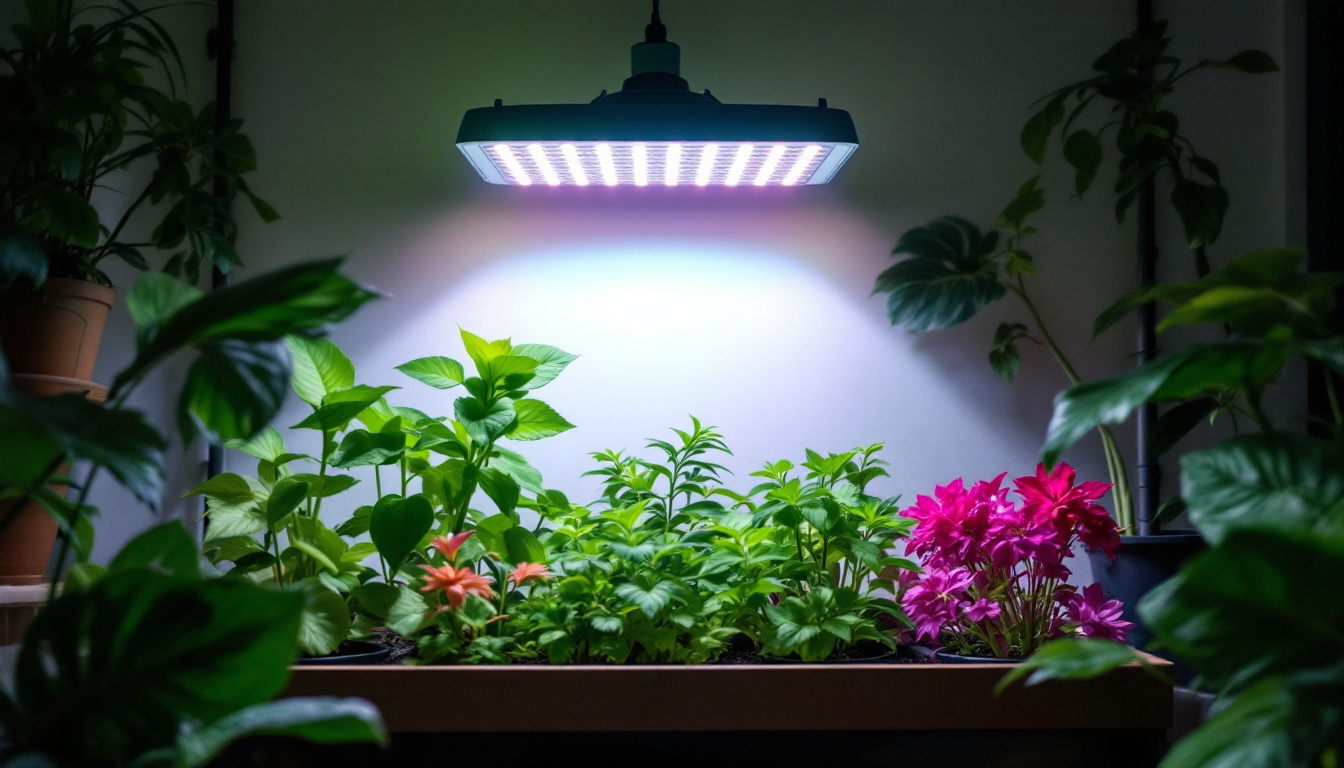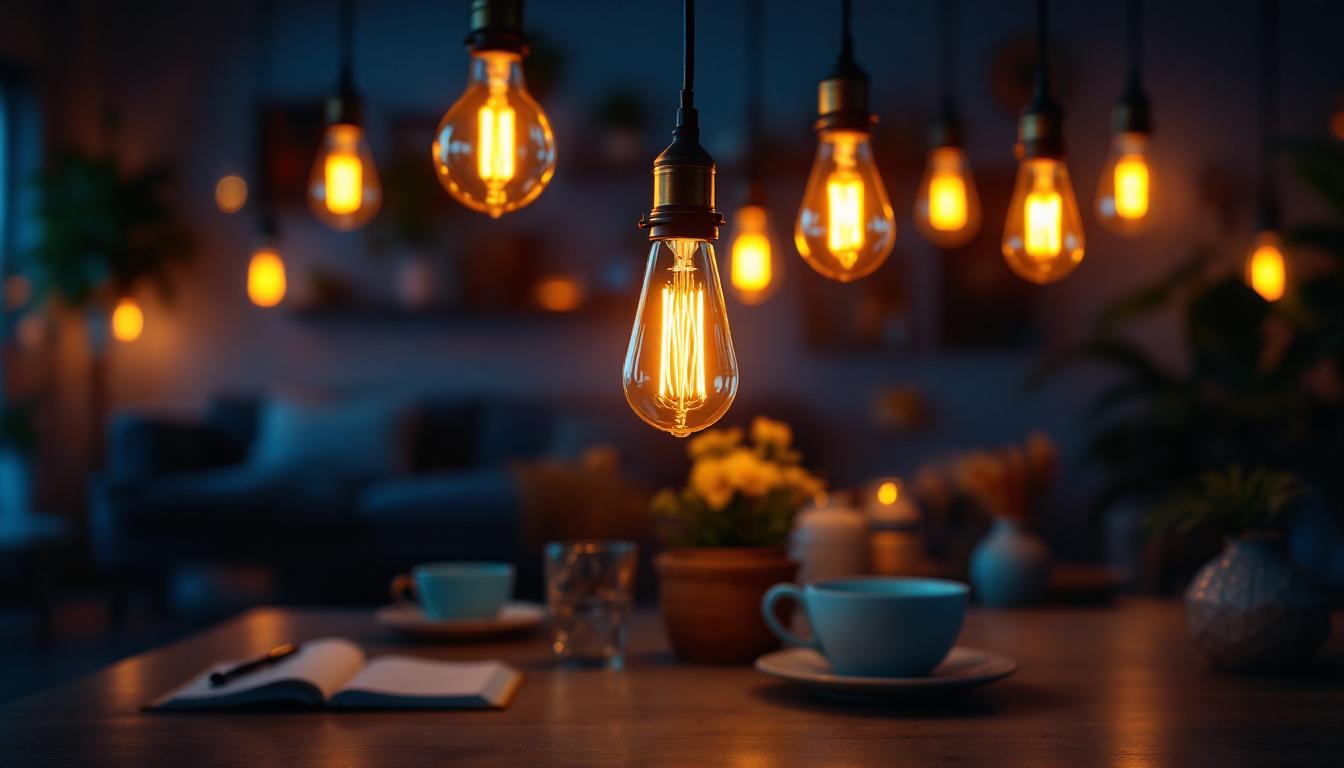
In the ever-evolving world of horticultural lighting, discount grow lights have emerged as a popular choice for both commercial and residential growers. As lighting contractors, understanding the nuances of these products is crucial for providing clients with the best possible solutions. This article will explore the various aspects of discount grow lights, including their types, benefits, and considerations for installation.
Grow lights are artificial light sources designed to support plant growth by emitting a spectrum of light that plants require for photosynthesis. For lighting contractors, it is essential to comprehend the different types of grow lights available on the market, particularly those categorized as discount options.
There are several types of grow lights, each with its unique features and benefits. The most common types include LED, fluorescent, and high-intensity discharge (HID) lights. Understanding these categories will help contractors advise clients on the most suitable options for their specific needs.
LED grow lights are increasingly popular due to their energy efficiency and longevity. They emit a specific spectrum of light that can be tailored to different plant growth stages, making them versatile for various applications. fluorescent lights, on the other hand, are often used for seedling growth and smaller indoor gardens. HID lights, including metal halide and high-pressure sodium, are well-known for their high output and efficiency but can be more expensive to operate. Each type of grow light has its own ideal use case, and the choice often depends on factors such as the type of plants being grown, the size of the growing area, and the grower’s budget.
Discount grow lights offer several advantages that can be appealing to both contractors and their clients. One of the primary benefits is cost savings. These lights are often more affordable than their premium counterparts, making them accessible for budget-conscious growers.
Additionally, many discount grow lights still provide adequate light intensity and spectrum for successful plant growth. While they may not have all the advanced features of higher-end models, they can still be effective for a variety of horticultural applications. This balance between cost and performance can be a significant selling point for contractors. Furthermore, discount grow lights often come in a range of designs and sizes, allowing contractors to recommend options that fit their clients’ specific spatial and aesthetic needs. For instance, compact models can be ideal for urban gardeners with limited space, while larger setups can cater to commercial growers looking to maximize their yield without breaking the bank. As the market for indoor gardening continues to grow, the demand for affordable yet effective lighting solutions is likely to increase, making it essential for contractors to stay informed about the latest developments in discount grow light technology.
When selecting discount grow lights, several key features should be taken into account. Understanding these features will enable lighting contractors to make informed recommendations to their clients.
The light spectrum emitted by grow lights is crucial for plant growth. Different plants require varying wavelengths of light at different growth stages. For instance, blue light is essential for vegetative growth, while red light promotes flowering and fruiting.
Discount grow lights may not always offer a full spectrum, so it is important for contractors to assess whether the lights meet the specific requirements of the plants being cultivated. Educating clients about the importance of light spectrum can enhance their satisfaction with the products. Additionally, some advanced grow lights come with adjustable spectrums, allowing users to customize the light output based on the specific needs of their plants at various growth stages. This flexibility can lead to healthier plants and potentially higher yields, making it a valuable feature for any grower.
Energy efficiency is another critical factor to consider when evaluating discount grow lights. While these lights are often more affordable upfront, their operational costs can vary significantly based on energy consumption.
LED grow lights typically have the highest energy efficiency, followed by fluorescent and HID options. Contractors should encourage clients to consider the long-term savings associated with energy-efficient models, as this can greatly impact their overall investment. Furthermore, energy-efficient grow lights often produce less heat, which can reduce the need for additional cooling systems in the growing environment. This not only contributes to lower energy bills but also creates a more stable climate for plant growth, which is essential for maximizing productivity and ensuring the health of the plants.
Proper installation of grow lights is essential for maximizing their effectiveness. Lighting contractors must be familiar with the best practices for installing discount grow lights to ensure optimal performance. Understanding the unique requirements of different plant species can also enhance the effectiveness of the lighting setup, as various plants have distinct light spectrum preferences and growth patterns.
The placement of grow lights can significantly influence plant growth. Lights should be positioned at the correct distance from the plants to avoid issues such as light burn or insufficient light exposure. For example, LED lights can be placed closer to plants than HID lights due to their lower heat output. Additionally, the angle of light can affect how plants absorb light; angled fixtures can help direct light more effectively, mimicking natural sunlight and promoting healthier growth.
Contractors should also consider the layout of the growing area. Ensuring even light distribution is vital for preventing uneven growth among plants. This may involve using multiple light sources or adjustable fixtures to accommodate different plant heights and growth stages. Moreover, utilizing reflective materials on walls and surfaces can enhance light efficiency, allowing for better light penetration and reducing energy costs in the long run.
Heat management is a critical aspect of grow light installation. Some discount grow lights, particularly HID models, can generate significant heat, which can stress plants and affect growth. Adequate ventilation and cooling systems should be in place to mitigate this issue. Beyond just exhaust fans, incorporating passive ventilation techniques, such as strategically placed vents or ducts, can help maintain a stable environment while reducing energy consumption.
Contractors should assess the growing environment and recommend appropriate cooling solutions, such as exhaust fans or air conditioning, to maintain optimal temperatures. This consideration is especially important in enclosed spaces like indoor gardens or greenhouses. Furthermore, monitoring systems that track temperature and humidity levels can provide real-time data, allowing for timely adjustments to the cooling systems, ensuring that plants thrive in their ideal conditions. Regular maintenance of these systems is also crucial to prevent any potential failures that could jeopardize plant health.
Despite their growing popularity, discount grow lights are often surrounded by misconceptions. Addressing these misunderstandings can help contractors provide better guidance to their clients.
One common misconception is that lower-priced grow lights are of inferior quality. While it is true that some discount options may lack advanced features, many are still effective for supporting plant growth. Contractors should emphasize that price does not always equate to quality, and many budget-friendly options can perform admirably.
It is essential to research and select reputable brands that offer reliable products at lower price points. Encouraging clients to read reviews and seek recommendations can help them make informed decisions.
Another misconception is that discount grow lights have a shorter lifespan compared to premium models. While some cheaper lights may not last as long, many discount options, particularly LED lights, can have a comparable lifespan to their more expensive counterparts.
Contractors should educate clients about the importance of proper usage and maintenance to extend the life of their grow lights. Simple practices such as keeping lights clean and ensuring proper ventilation can significantly impact their longevity.
The grow lighting industry is continuously evolving, with new technologies and trends emerging regularly. Lighting contractors should stay informed about these developments to provide clients with the most current information and recommendations.
LED technology continues to advance, with new models offering improved efficiency and customizable spectrums. These advancements allow growers to tailor their lighting solutions to specific plant needs, enhancing growth and yield.
Contractors should keep an eye on emerging LED products that may offer better performance at competitive prices. Staying updated on technological advancements will not only benefit contractors but also their clients, who will appreciate the latest innovations in grow lighting.
Smart technology integration is becoming increasingly prevalent in the grow lighting sector. Many new grow lights can be controlled via smartphone apps, allowing users to adjust light schedules, intensity, and spectrum remotely.
This level of control can significantly enhance the growing experience for clients, making it easier to manage their plants effectively. Contractors should consider recommending smart grow lights to clients interested in modernizing their growing setups.
Discount grow lights present an excellent opportunity for lighting contractors to meet the needs of budget-conscious clients without sacrificing performance. By understanding the types, benefits, and installation considerations of these lights, contractors can provide valuable guidance and recommendations.
As the industry evolves, staying informed about advancements in technology and addressing common misconceptions will further enhance the contractor-client relationship. By doing so, lighting contractors can ensure their clients achieve successful and productive growing experiences, ultimately leading to satisfied customers and repeat business.
In summary, discount grow lights are not merely a cost-saving option; they can be a viable solution for many growers. With the right knowledge and approach, lighting contractors can demystify these products and help clients make informed decisions that benefit their horticultural endeavors.
Ready to elevate your lighting solutions with high-quality, spec-grade grow lights at unbeatable prices? Look no further than LumenWholesale, where we provide lighting contractors with superior products that meet the highest industry standards. Say goodbye to inflated markups and hello to premium lighting with the convenience of free shipping on bulk orders. Don’t compromise on quality or value; choose LumenWholesale for your next project and experience the perfect blend of affordability and performance. Wholesale Lighting at the Best Value is just a click away. Start transforming your lighting projects today!

Discover expert tips and strategies for lighting contractors embarking on can lights remodel projects.

Illuminate your garage with confidence! Discover essential tips, types, and installation advice for garage flood lights to enhance safety and visibility in your space..

Discover how vintage style LED light bulbs enhance modern lighting with timeless charm, energy efficiency, and durability.

Discover how utility lights are revolutionizing the lighting industry for contractors.